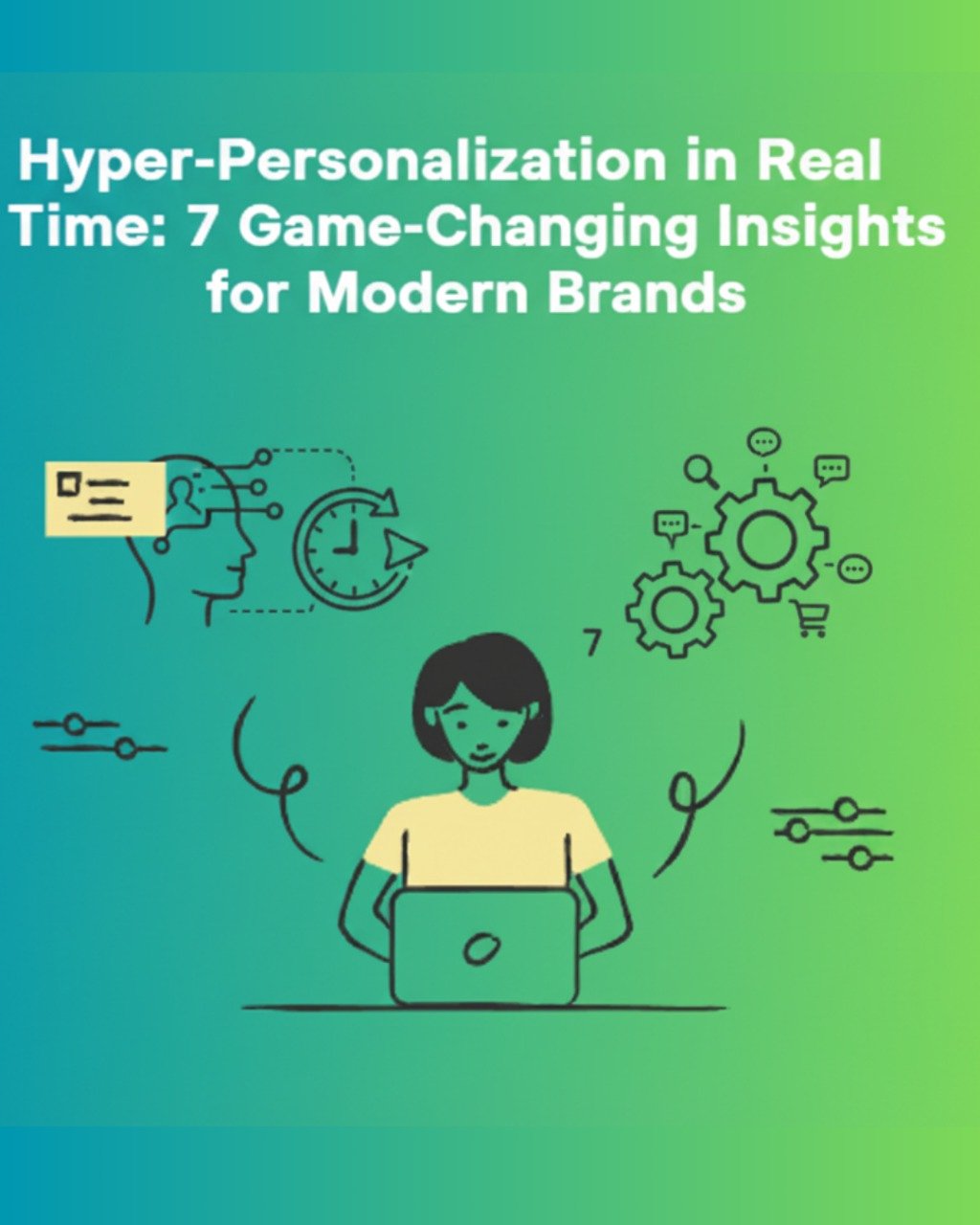Hyper-Personalization in Real Time is transforming how modern brands connect with customers. Today’s audiences expect more than standard personalization; they want brands to understand their needs, anticipate their intentions, and respond instantly. With the power of artificial intelligence, predictive analytics, and behavioral insights, Hyper-Personalization in Real Time enables brands to create experiences that feel timely, relevant, and deeply personal.
This strategy goes far beyond simply addressing users by their names. It involves crafting live, data-driven experiences that dynamically adapt to user behavior and preferences, fostering genuine emotional connections at every touchpoint.
Here are seven game-changing insights every modern brand should know to stay ahead in the age of instant engagement and intelligent marketing
1, What Is Hyper-Personalization?
Hyper-personalization is an advanced version of traditional personalization that uses artificial intelligence, machine learning, and real-time analytics to tailor experiences for each individual user. It focuses on understanding behavior, intent, and emotions in the moment rather than relying on static demographic data.
For example, a travel app could recommend destinations based on a user’s weather, recent searches, and spending patterns instead of just their age or location. This type of personalization feels human, responsive, and emotionally aware, making users feel recognized and understood instead of simply targeted.
2, The Core Principles of Hyper-Personalization
Hyper-Personalization works best when built on three core principles:
a. Real-Time Data Integration
Every action a customer takes generates valuable data. Integrating this live data from websites, apps, CRM systems, and IoT devices allows brands to update content, offers, and recommendations instantly.
b. Artificial Intelligence and Predictive Analytics
AI helps marketers forecast what a user will likely want next. This predictive power allows brands to take proactive actions instead of waiting for users to express intent.
c. Omnichannel Consistency
Customers interact with brands across multiple platforms such as social media, websites, and mobile apps. Hyper-Personalization in Real Time ensures consistent, context-aware experiences across all channels, creating a unified and seamless journey for every customer.
3, Why Hyper-Personalization in Real Time Matters
Today’s digital consumers expect interactions that are relevant and timely. Research shows that 91% of consumers prefer brands offering personalized recommendations, and more than 70% engage only with content tailored to them.
Implementing Hyper-Personalization in Real Time helps businesses achieve:
Higher engagement through tailored messaging
Increased conversions from precise targeting
Improved customer loyalty through trust and relevance
Stronger revenue growth driven by intelligent automation
A leading example is Netflix, where AI-powered recommendations influence over 80% of viewing activity. This shows how impactful hyper-personalized experiences can be when executed effectively.
4, Real-Time Data: The Engine Behind Hyper-Personalization
Real-time data is the foundation of effective Hyper-Personalization in Real Time. It transforms static campaigns into adaptive, continuous engagement systems that respond instantly to user behavior.
Important real-time data sources include:
Website and in-app interactions
Social media engagement
Purchase and browsing history
Location-based and IoT data
Email or campaign response metrics
This continuous flow of live insights allows marketers to act instantly. For example, when a customer hesitates at checkout, an AI tool can trigger a discount or product recommendation. This not only drives conversions but also boosts loyalty and retention
5, Hyper-Personalization with CleverTap: Achieving Real ROI
Platforms like CleverTap have redefined how brands personalize experiences. CleverTap combines AI-driven insights, behavioral segmentation, and automation to deliver campaigns that adapt intelligently to each user journey.
How CleverTap Delivers Growth:
Unified Data: Combines app, web, and CRM data into one centralized view.
Behavioral Analytics: Tracks user actions such as drop-offs and engagement levels.
Predictive Modeling: Scores users based on engagement probability, churn risk, and conversion potential.
Real-Time Triggers: Sends personalized messages or push notifications at the most relevant moment.
A/B Testing: Automatically tests and optimizes campaigns for the best performance.
Proven Results:
Up to 30% higher customer retention
2.5 times more engagement from personalized experiences
Enhanced ROI through data-driven automation
With solutions like CleverTap, marketing becomes adaptive, learning continuously from user interactions and evolving in real time to drive measurable growth.
6, Building a Scalable Strategy for Hyper-Personalization in Real Time
Success in Hyper-Personalization in Real Time depends on more than just tools. It requires a strategic and structured approach that combines technology, creativity, and ethics.
Key Layers of an Effective Strategy:
Unified data collection and integration across systems
Behavioral segmentation based on intent, not demographics
AI-driven dynamic content generation
Predictive targeting for proactive customer engagement
Ongoing measurement and optimization
Ethical data handling and transparent communication
This structured framework ensures Hyper-Personalization in Real Time remains scalable, measurable, and customer-focused.
7, Challenges and the Future of Hyper-Personalization in Real Time
While Hyper-Personalization in Real Time offers immense potential, it also introduces challenges such as data privacy, content scalability, and technical readiness.
Key Challenges:
Ensuring compliance with privacy laws like GDPR and India’s DPDP Act
Managing fragmented data systems across platforms
Producing large volumes of personalized content efficiently
Building strong AI infrastructure and analytical skills
Future Outlook:
The next stage of hyper-personalization will move beyond data-driven methods to emotion-driven engagement. Future innovations will include:
Emotion detection using facial and voice analysis
Generative AI for customized videos, visuals, and offers
AR-based shopping experiences personalized for each user
Conversational AI providing instant, micro-personalized responses
This evolution will allow brands to respond not only to what users do but also to how they feel, enabling deeper and more meaningful engagement.
Final Thoughts on Hyper-Personalization in Real Time
Hyper-Personalization in Real Time has redefined what it means to engage customers in the digital world. It is not just a marketing innovation but the foundation of future brand-consumer relationships. By combining artificial intelligence, predictive analytics, and continuous data insight, brands can deliver relevant messages at the perfect moment every time.
The future belongs to marketers who use data to connect, anticipate, and inspire. Brands that embrace Hyper-Personalization in Real Time today will lead tomorrow’s digital landscape with stronger connections, smarter systems, and experiences that truly resonate.


